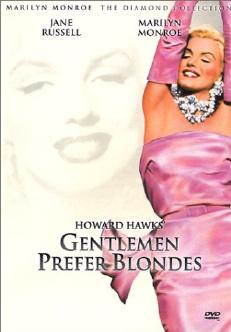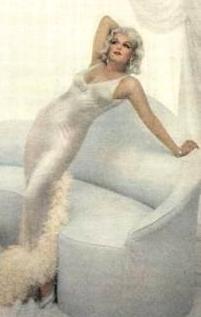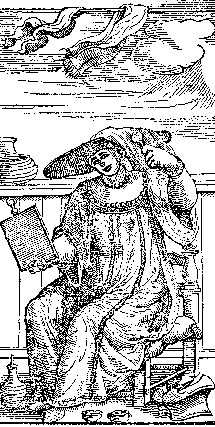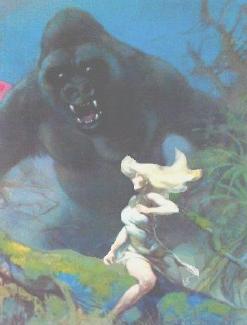
Heve you seen
“Gentlemen Prefer Blondes”?
 If you are a Marilyn Monroe fan, you probably have.
The movie based its storyline on the original Broadway stage hit written
by Anita Loos in the 1920s. Howard Hawks remade it into
a musical comedy in 1953.
If you are a Marilyn Monroe fan, you probably have.
The movie based its storyline on the original Broadway stage hit written
by Anita Loos in the 1920s. Howard Hawks remade it into
a musical comedy in 1953.
Marilyn Monroe plays as Lorelei Lee, and Jane Russell as Dorothy Shaw. They are a pair of spunky unmarried showgirls who set out aboard a luxurious cruise ship for France and go to Paris to look for their prospective rich husbands.
Once on board, both women find the men’s Olympic team, diamond miners and a man called Malone—a private investigator sent by Lorelei’s future father-in-law to make sure she behaves properly and to prevent her from finding another rich husband.
Lorelei (Monroe) uses her naïve innocence and stunning looks to place men under her spell. Dorothy ( Russell ) applies the same tricks but seems more outspoken and down-to-earth, and just loves to play the game. When these two showgirls work together, men do not stand a chance.
Dorothy falls for Malone, who follows Lorelei, and Lorelei tries to stay faithful to her beau back home, unaware that Malone has been hired by her beau’s father.
Troubles grip the girls when they come to know Malone’s true identity. The two girls start to retrieve any damaging evidence he might have against Lorelei.
Once in France the girls run into more troubles because the police look for stolen diamonds. Malone has trouble of his own since, by now, he has fallen in love with Dorothy and must convince her of his genuine feelings.
Although Jane Russell, a brunnete, shines in the movie, it catapulted Marilyn Monroe to fame and top stardom as the title implies. If you haven’t seen the film, you can buy its DVD. For your convenience, I’ve placed a link to the Amazon DVD site. Please click the movie poster above. (A new window will pop up.)
Marilyn Monroe,
the first blonde bombshell?
 In the recent past, Mrilyn Monroe became a sexy blonde icon. Was she the first
blonde bombshell? By the way, who invented the original bombshell?
In the recent past, Mrilyn Monroe became a sexy blonde icon. Was she the first
blonde bombshell? By the way, who invented the original bombshell?
“Blonde bombshell” has evolved to mean a voluptuous, dizzy blonde. Jean Harlow became the original blonde bombshell—the first platinum-blonde goddess of the silver screen—when she starred in a 1933 film loosely based on her own career. This movie was released under the title “Bombshell” in the U.S. and under the title “Blonde Bombshell” in the U.K.
However, “Blonde Bombshell” was not listed until 1942 in the OED (Oxford English Dictionary).
By the way, the dictionary definition of “bombshell” is as follows:
1) n :a shocking surprise
Example: news of the attack came like a bombshell
2) n :an entertainer who has a sensational effect
Example: she was a blonde bombshell
3) n :an explosive bomb or artillery shell
The succeeding blonde bombshells include Jayne Mansfield, Betty Grable, Kim Novak, Debbie Reynolds, Grace Kelly and Brigitte Bardot.
Is the blonde fever a recent phenomenon?
No, not really. In 360 BC, Praxiteles used his mistress, Phryne, as his model for a statue of a blonde Aphrodite, who came to represent all forms of love. Many stone carvers repeatedly reproduced this statue, which inspired prostitutes to find ways to lighten their hair.
However, the poet Menander insisted that “no chaste woman ought to make her hair yellow”. Nonetheless, Homer preferred to imagine Aphrodite emerging from the sea wearing nothing but her blonde tresses.
How come a blonde in the first place?—you might ask.
Well, blond hair gets you more attention. Blond hair works as a magnet
for sex and money as the ancient Greek prostitutes thought.
In ancient Rome, aristocrats in addition to courtesans rubbed pigeon dung into their hair to bleach it. To become a blonde, ancient women spent hours dipping their hair in all sorts of unpleasant, smelly things. Rich Roman women employed specialist hairdressers and stabbed them with pins when they got the tint wrong.
The role of Aphrodite was assumed by Venus—an erotic Roman goddess portrayed with golden locks. Venus also inspired prostitutes to pick up the peroxide bottle.
Peroxide: A viscous liquid with strong oxidizing properties; a powerful bleaching agent; also used as a disinfectant and (in strong concentrations) as an oxidant in rocket fuels.
By the third century A.D., Christian preachers had concluded that the blond naked Venus was evil. However, lightening the hair or wearing a blond wig remained a popular way of standing out among the dark-haired Romans.
By the Middle Ages, Venus had transmogrified into Eve, duly portrayed as a beautiful blond temptress.
Even Virgin Mary was portrayed as a blonde. This blond image was inspired by Saint Bridget—a 14th-century Swedish holy woman, presumably a blonde herself.
During the Renaissance, Virgin Mary continued to be portrayed as a blonde by Raphael and others. Venus also returned to fashion as a blonde. Venus created by Botticelli shows her figure naked with only her long blond hair providing some modesty.
Venetian blonde on the rooftop
 |
|
Venetian women spent hours on a rooftop with their hair spread
out in the sun to bleach. Wide brims protected her skin, since a white
complexion was prized as highly as blond hair.
To make skin beautiful, the women washed themselves in a liquid distilled when a dove was cooked in its feathers. To keep it that way, Venetian ladies usually wore veils in the streets. This custom gave them an appearance of modesty not usually associated with the Renaissance, but the effect was diminished by the décolletage then in fashion, which reduced the illusion of decorum to a bare minimum. |
Because the gentlemen of the Renaissance also seemed to prefer blondes, the women in Venice made a great effort with the way of dyeing hair blond.
In those days, the Venetians had a small wooden shack without a ceiling on the rooftop. The Venetian women stayed up there all day long, exposing their hair to the scorching sunlight in summer.
They dipped the sponge attached to a short stick into a certain washing liquid, then applied it to their hair. They waited until it dried up. Then they repeated the process a dozen times. After all these troubles, they could eventually turn their hair blond.
To make this washing liquid, you first wrap a piece of charcoal or the ashes of charcoal in cloth, pour boiling water over it, and keep the water. Then you boil the water with the seeds of endive until it became thick. Apply this liquid twice every week, and you will have the desired effect in several months.
Some of Renaissance Venetians favored horse urine to turn their hair into the lighter color.
If those Venetian women knew the present-day handy way
of dying hair, they would consider it stupid to take all these troubles
to bleach their hair under the blazing inferno on the rooftop.
Queen Elizabeth also wanted to be a blonde bombshell.
In 16th-century England, the russet-haired Queen Elizabeth chose blondeness as a symbol of her virginity, and while it is not known if she dyed her hair blonde, this was how she was often portrayed, not only by poets such as Spenser but also by painters.
A coronation portrait painted around 1600, 42 years after she came to the throne, shows a young Elizabeth with long blonde hair. The implied association between the Virgin Queen and the Virgin Mary didn’t appear accidental.
Hitler admired blondes.
The 20th century brought the emergence of the blonde as a symbol of racial superiority. Long before Hitler seized power in Germany in 1933, anti-Semitism was accompanied by a new myth of Aryanism, encouraged by the new fad of eugenics.
Hitler’s adulation of blondeness seemed to affect the development of a blonde bombshell. In Hollywood, movies starring blondes sprout out.
 Strangely enought, these movies
also affected Hitler’s way of thinking because
“King Kong” became one of his favorites
and apparently it gave him an ample dose of racial paranoia as
the KOng became an evil race and the blonde represented the Aryan.
Strangely enought, these movies
also affected Hitler’s way of thinking because
“King Kong” became one of his favorites
and apparently it gave him an ample dose of racial paranoia as
the KOng became an evil race and the blonde represented the Aryan.
Even after the second world war, the blond fad remained robust. And it seems to continue at present, though there exist many types of blondes. Jean Harlow and Mae West represented vampish images while Betty Grable seemed to symbolize a socially acceptable blonde. Marilyn Monroe turned into a dumb blonde, Grace Kelly became a regal blonde, and Debbie Reynolds turned up as a girl-next-door blonde.
Do gentlemen still prefer blondes? Maybe so, but I suspect, gentlemen dance to the tune of commercialism. More than anything else, a blonde sells. Before Madonna turned into a blonde, she typically sold five million copies of every album. Afterwards? 20 million!
Please select one
from the
following topics:
